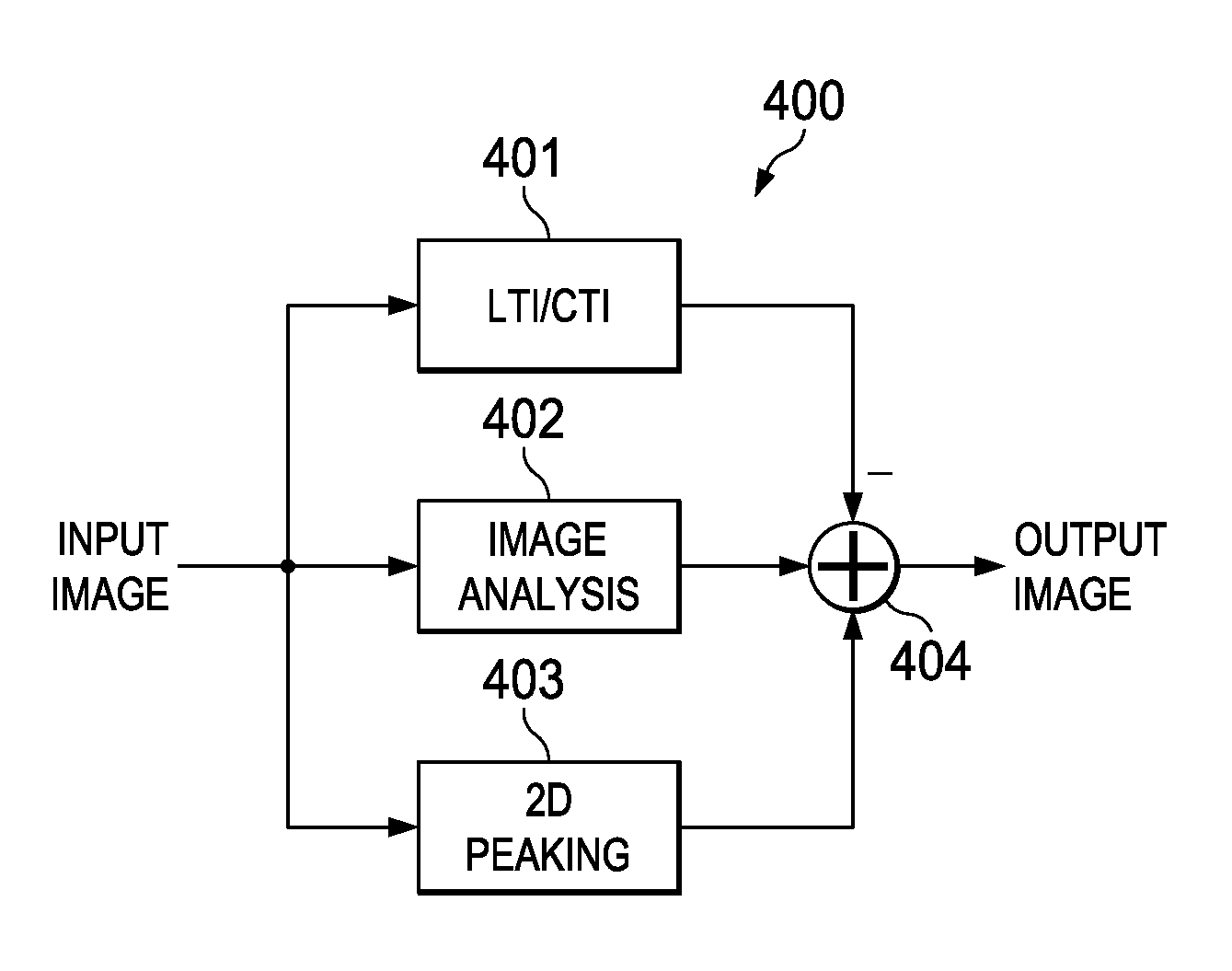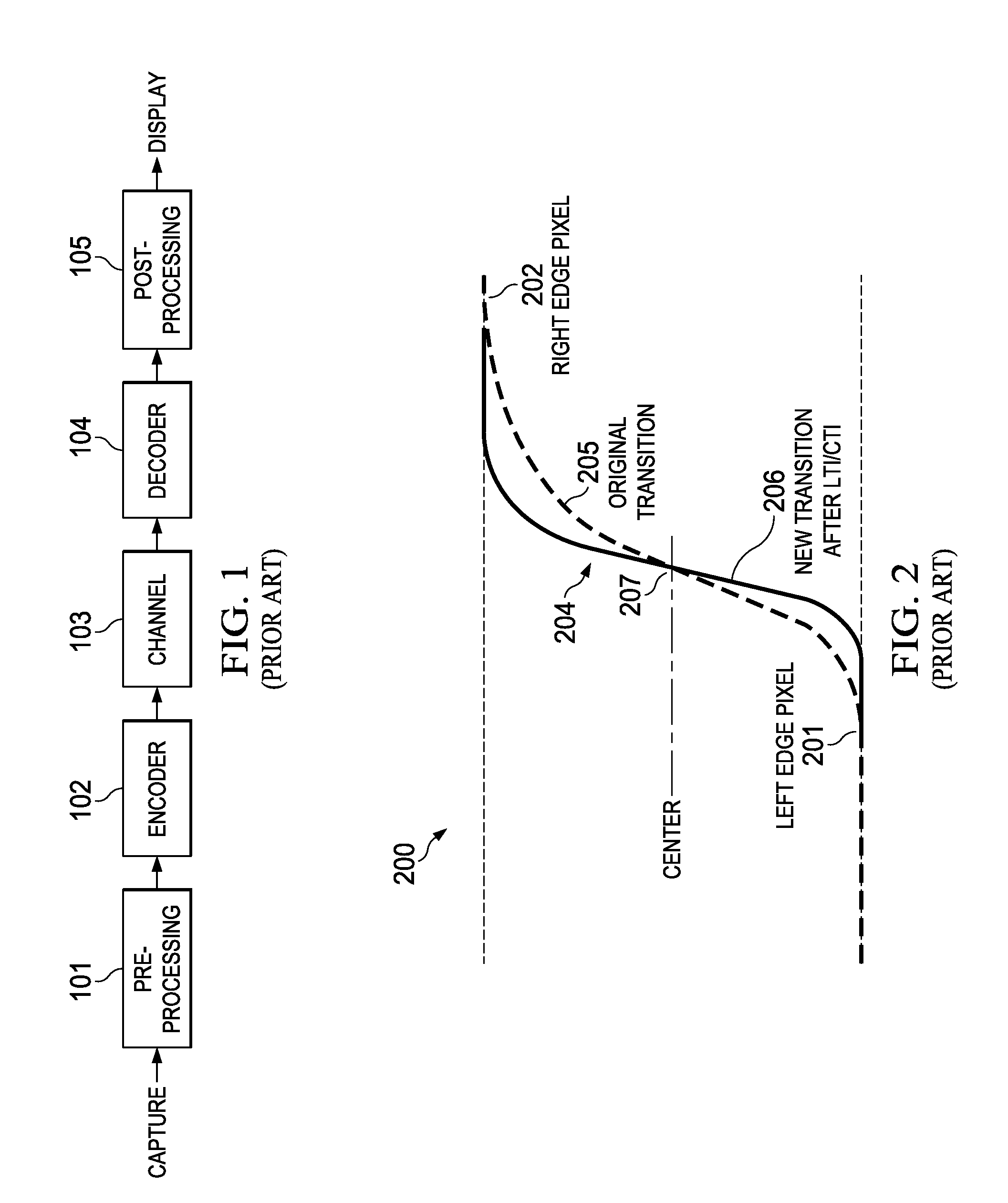Content adaptive edge and detail enhancement for image and video processing
a technology of image and video processing and adaptive edge, applied in image enhancement, image analysis, instruments, etc., can solve the problems of blurred video images and loss of video/image sharpness, and achieve the effects of reducing noise on flat areas, avoiding too strong transitions, and improving lti/cti quality
- Summary
- Abstract
- Description
- Claims
- Application Information
AI Technical Summary
Benefits of technology
Problems solved by technology
Method used
Image
Examples
Embodiment Construction
[0014]FIG. 1 shows a typical video communication system where the source video signal undergoes a preprocessing step 101 before being encoded in 102. The encoding step may also include video compression such as MPEG. After the encoding step, the signal is transmitted through a variety of possible communication channels 103 such as cable, fiber optics, satellite or direct broadcast. At the receiving end the signal is decoded and decompressed in step 104, then undergoes post processing in 105 before being displayed. The invention described may be implemented either in the preprocessing or in the post processing operation.
[0015]LTI / CTI can be implemented in many ways [OHA, OTO, MIL, HE-SHARP]. For example, in one implementation [OHA], a delay modulation-based method is used for enhancing the color sharpness of a chrominance signal by increasing the steepness of color edges without ringing. The method is based on a median logic circuit using three signals, and selects values from these ...
PUM
 Login to View More
Login to View More Abstract
Description
Claims
Application Information
 Login to View More
Login to View More - R&D
- Intellectual Property
- Life Sciences
- Materials
- Tech Scout
- Unparalleled Data Quality
- Higher Quality Content
- 60% Fewer Hallucinations
Browse by: Latest US Patents, China's latest patents, Technical Efficacy Thesaurus, Application Domain, Technology Topic, Popular Technical Reports.
© 2025 PatSnap. All rights reserved.Legal|Privacy policy|Modern Slavery Act Transparency Statement|Sitemap|About US| Contact US: help@patsnap.com



